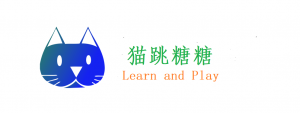Traditional therapeutic uses
Main indications: cough due to infections and allergies, chronic smoker's bronchitis.
In Chinese energy, this syrup is used to tone the Energy of the Lungs and Spleen and to fight respiratory infections.
Associated symptoms : cough, thick, colored phlegm
Dosage
Two teaspoons, three times a day, with a little hot water. Can be used over a long period by decreasing the dosage to one teaspoon per day.
comments
According to Traditional Chinese Medicine, the cough is caused by an attack of evil energies (microbes, allergenic or irritant products) on the respiratory tract and the Lungs. The mucus and impurities block the passage of Energy from the Lung down, which causes breathing difficulties and coughing. The sirup Nim Jiom Pei Pa Koa works in several ways: it helps the bronchi to free itself of phlegm, it stops the cough and it invigorates the Energy of the Lung, which strengthens the immune system. Gan Cao and Chen Pi invigorate the Energy of the Spleen which decreases the production of phlegm. All the plants used in this preparation also have antibiotic and antiviral properties. Dandelion, for example, has bactericidal effects in vitro against Streptococcus pneumoniae, the Neisserai meningitidis, the Mycobacterium tuberculosis and viruses Echo.
Research
Clinical trials have shown that syrup Nim Jiom Pai Pa Koa could relieve coughing and help clear up phlegm. Tests in vitro and in vivo have also been shown to be effective in relieving asthma. Its anti-inflammatory properties have been shown in four models of acute and sub-acute respiratory inflammation.1
Precautions
Contact a doctor if the cough worsens, persists for more than a week, or is accompanied by high fever. Do not exceed the recommended dose.
Composition
|
Name in pine yin |
Pharmaceutical name |
Therapeutic actions |
|
Pi Pa Ye |
Folium eriobotryae japonicae (medlar leaves) |
Stops coughing, eliminates thick, colored phlegm |
|
Pu gong ying |
Herba cum radice taraxaci (dandelion, leaves and roots) |
Eliminates toxins produced by infection |
|
Gan Cao |
Radix glycyrrhisae (licorice) |
Humidifies the Lungs, stops coughing, tones the Lung Energy, harmonizes the action of other plants |
|
Chen Pi |
Pericarpum citri reticulatae (tangerine bark) |
Helps with breathing, stops cough with profuse phlegm, tones the Lungs |
|
Ze Qi |
Herba euphorbia helioscopiae (Non-toxic spurge) |
Eliminates thick and sticky phlegm, fights cough of asthmatic type, disperses nodosities |
|
Kuan Dong Hua |
flos tussilagi farfarae (coltsfoot or donkey flower bud) |
Antitussive, expectorant, bronchodilator |
|
Jin Niu Cao |
Polygalae seneca (senega root) |
Eliminates phlegm, anti-inflammatory of the respiratory tract |
|
Feng Mi |
Email (honey extract) |
Humidifies and tones the Lungs, stops coughing, softens the throat |
On the shelves
Health Canada has assigned a Drug Identification Number (DIN) to the following product, which certifies that it is free of contaminants, that it does not contain synthetic drugs, and that the Traditional Chinese Pharmacopoeia recognizes its effectiveness for the uses described here.
|
|
Available in Chinese herbalists, pharmacies, several stores of natural health products as well as at distributors of acupuncture equipment and Traditional Chinese Medicine.
|
Research and writing: Arlette Rouleau, Ac., OAQ and Pierre Lefrançois |
ReferencesBensky Dan and Barolet Randall, Chinese Herbal Medicine, Formulas & Strategies, Seattle, Eastland Press, 1990. 1. Li ZL, Dai BQ, Liang AH, Li GQ, Yang Q, Xue BY. (Pharmacological studies of nin jion pei pa koa), (article in Chinese, summary in English). Zhongguo Zhong Yao Za Zhi 1994 Jun; 19 (6): 362-5, 384 |
Discover more smart Chinese natural health tips with Art B Zen ( Art for well being)
]]>















